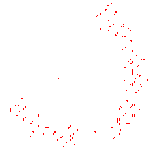
Fig.1
In spite of the huge changing of the inertia ellipsoid position with respect to the construction axes the natural demands of the people responsible for electric power unit was the same: to keep solar panels directed towards Sun, i.e. sustain -Z axis along the Sun direction. It may be possible if the s/c would have three axes stabilization what is not our case because for MAGION the spin stabilization has been chosen.
And according to the mechanics laws spin axis could be constant in space (and in spacecraft reference system) only if it would coincide with principal inertia axis.
But Z axis is no more principal inertia axis. So the decision has been
taken to transfer to the new reference system and to use for this system
the software developed for the nominal case.
It means that the solar sensors measurements are to be transformed for the
new system as the control moments. But in this system the control moments
vectors do not go along principal axes as it was supposed for the nominal
case.
So applying the control impulse to rotate the angular momentum (i.e.
giving moment orthogonally to the angular momentum vector) we can not
avoid to change the value of this momentum so changing the spin rate.
And this has happened during attitude control operations session at
September the 25th.
During this session the principal axis Zp has been targeted towards
Sun with the accuracy about 5 degrees. Simultaneously the period has
been changed from 49 to 46 seconds.

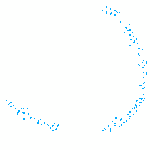
| 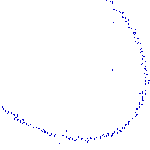
| 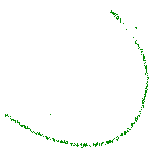 |
| Fig.2 | Fig.3 | Fig.4 |
Further figures Fig.2 - Fig.4 illustrate the diminishing of nutation with time and
rising the angle of Zp axis with Sun according to Earth orbital motion
i.e. about 1 degree per day.
It could be seen that the spin period is diminishing with time (Table 1). Supposed
reason for this phenomena is Sun light pressure moments.
To estimate the other components of this moments angular momentum vector
has been calculated by processing Sun and Earth sensors
measurements.
Right ascension and declination of this vector are given in Table 1.
| DATE | SPACECRAFT SPIN PERIOD | ANGULAR MOMENTUM VECTOR | |
|---|---|---|---|
| Right Ascension | Declination | ||
| sec | deg | deg | |
| 2.10.95 | 43.3 | 181.8 | -3.9 |
| 6.10.95 | 42.9 | 182.0 | -2.4 |
| 14.10.95 | 42.5 | 182.4 | -1.5 |
Table 1.
Attitude motion parameters determination was based on Euler model approximation by trigonometric functions of time. Actually some amplitudes are calculated as well as angular velocities of s/c and angular momentum vector. The maximum deviation of the last one from the principal inertia axis Zp is a nutation amplitude.
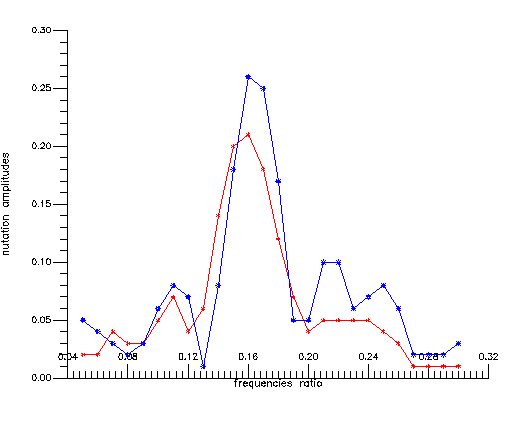
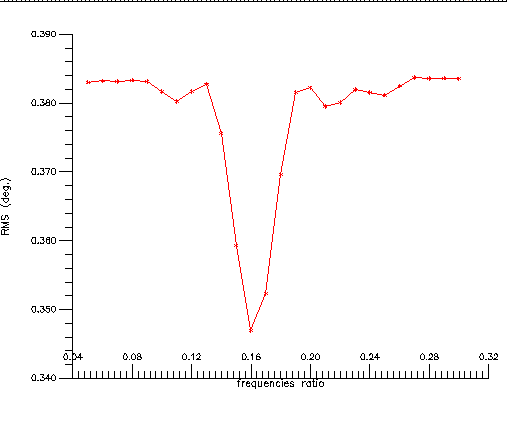
Last updated 2 Nov 1995